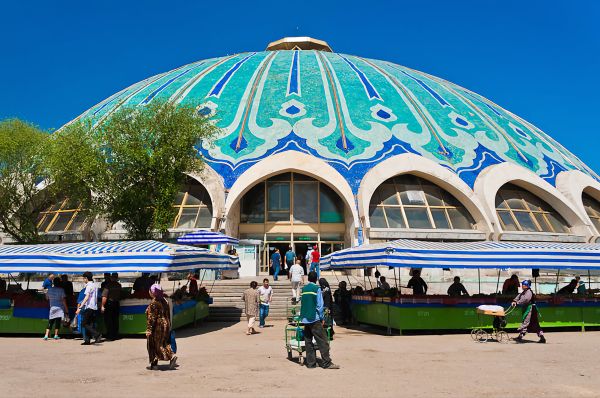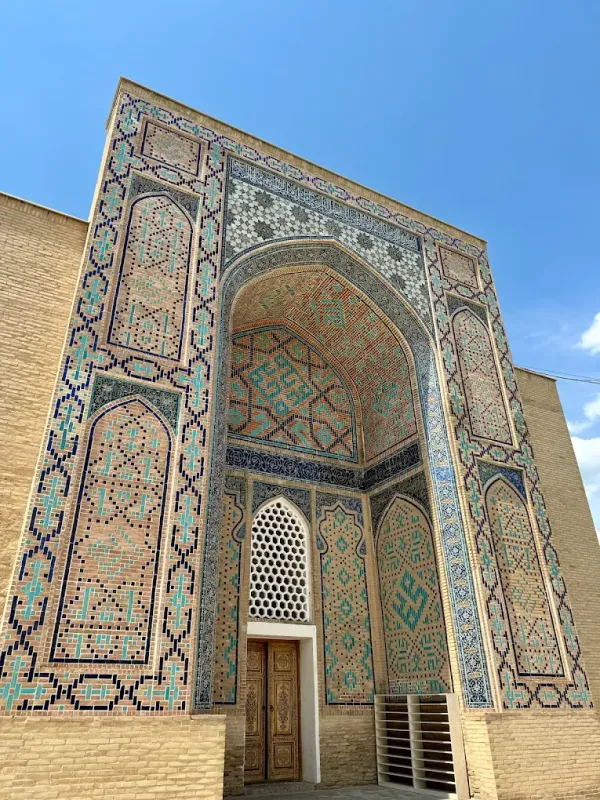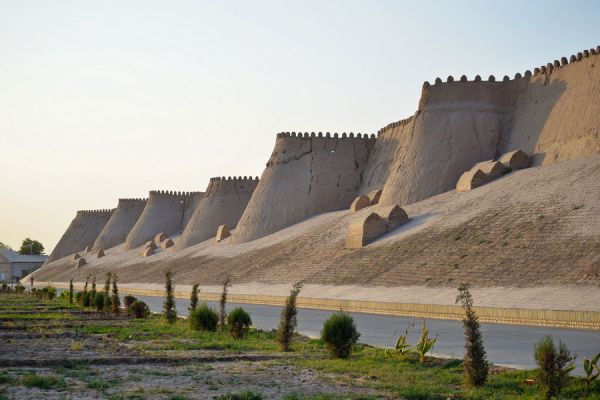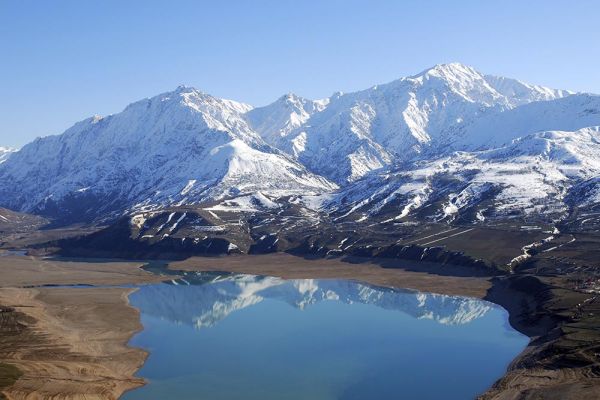Ak-Sarai Palace
The city of Shakhrisabz is primarily associated with the Ak-Sarai Palace, which was built in the late 14th - early 15th centuries by order of Amir Temur.
There are many amazing legends connected with the history of the construction of the palace. According to one of them, Temur was going to build the greatest creation and for this he invited an architect, to whom he told his whole idea. After listening to the governor, the architect asked for access to the state treasury. After he received permission, artisans began to make foundation blocks from clay with an admixture of gold right in front of Temur. Seeing that the ruler was not impressed, the architect broke the blocks and returned the gold to the treasury. When Temur asked: "Why did you do that?" the architect replied: "In order to make sure that you are determined to start the construction of a building that requires huge expenses." The second legend says that after most of the construction work was completed, Temur began to hurry the craftsmen to finish the decorative cladding of the palace. But the craftsmen were in no hurry to cover the building with majolica and mosaics. When the angry ruler ordered the chief architect to be brought to him, it turns out that he disappeared after hanging a chain in the center of the main arch of the palace. Since then, they could not find another equally skilled craftsman, and the building remained unfinished. However, after some time, the architect reappeared and, having made sure that the chain on the entrance arch began to hang significantly lower, he began to decorate the building. When Temur demanded from him an explanation for his strange disappearance and sudden appearance, the architect replied: "I did not dare to disobey my master's order, but I could not fulfill it in any way. Severe punishment awaited me in any case, since such a magnificent building must shrink, otherwise the entire cladding would have been destroyed." The great ruler appreciated the wisdom and resourcefulness of the master.
The construction of the palace in Shakhrisabz lasted more than a quarter of a century. The scale of the palace is striking in its size: only one main courtyard, which was reconstructed from a microrelief, was 120-125 m wide and 240-250 m long. The dimensions of the other courtyard and the outer perimeter of the courtyard could not be restored due to serious violations of the microrelief in the XV-XVI centuries. The calculation of the proportions of the preserved elements of the building shows that the height of the main portal reached 70 m. The main portal of the palace faces north, towards the capital Samarkand. The architectural decoration, distinguished by a wide variety of styles and colors, undoubtedly deserves special attention in the entire appearance of Ak-Sarai. The use of mosaics, mostly in dark and light blue colors, in the brickwork, which create large geometric and epigraphic patterns against the background of polished bricks, give the portal a special softness of colors and a sense of mystery. The exquisitely executed foliage ornament contains mainly calligraphic inscriptions from the Koran. There is an inscription in the center of the cladding indicating the date of completion – 798. (1395-1396) and the name of the architect is Muhammad Yusuf Tabrizi (from the Azerbaijani city of Tabriz).
The Spanish ambassador, Rue Gonzalez de Clavijo, who passed through Shakhrisabz in 1404 on his way to Samarkand for a reception at Temur's courtyard, was amazed and delighted by the architectural marvel, and he left a detailed description of this palace, although at that time the magnificent artistic decoration of the palace was not yet finished. According to the notes of Ambassador Clavijo, who visited the Ak-Sarai Palace, "this palace had a very long entrance and a very high portal, and at the entrance, on the right and left sides, there were arches made of bricks covered with tiles painted in various colors. There were rooms under the arches that looked like rooms without doors, and the floor inside them was covered with tiles. They were made so that people could sit in them when the ruler was present in the palace. There was another door behind the room, and behind it was a large courtyard, which was surrounded by ornate galleries, and the floor of this courtyard was laid with white tiles. There was a large swimming pool in the center of the courtyard. The courtyard was about 300 paces wide, and led to a large house, which had a very high and wide door decorated with gold and expertly executed tiles. There was a lion lying in the sun in the center above the door, and the exact same pattern could be seen around the edges. It was the symbol of the ruler of Samarkand. After that, the ambassadors were invited to take a look at the room that the ruler had designated for spending time with his wives. It was very big and luxurious. In front of him was a garden with many shady fruit trees. There were many pools and lawns inside it. This garden was so big that people could relax peacefully in the summer, sitting by the water in the shade of the trees. The palace is made so sumptuously and artfully that in order to describe it, you have to go there and explore for a while."











